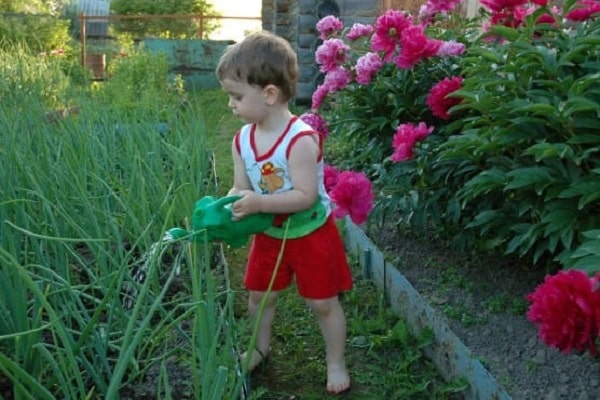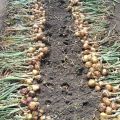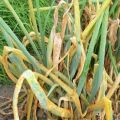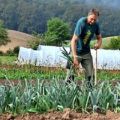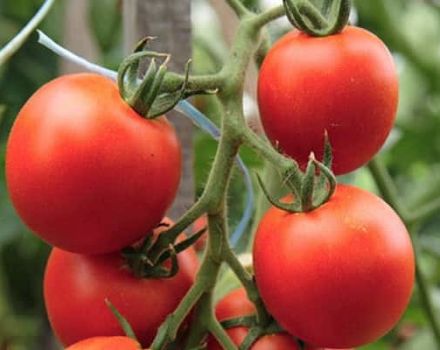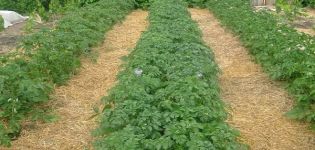How to water onions correctly and often outdoors, when to stop watering
Growing onionsAt first glance, it may seem like a simple and uncomplicated matter, but in reality the process requires adherence to the basic rules of gardening. You need to know how to water onions in the open field, how to process and feed them. The subtleties of agricultural technology allow you to grow a good and high-quality crop. A vegetable needs a lot of moisture, but its excess leads to the development of fungi, therefore, it is necessary to follow the irrigation rules when growing onions.
When to start watering?
Watering onions outdoors is a must. After all, the plant quickly reacts to any changes in the climate and, accordingly, in the soil. If the bulb is in dry and unmoistened soil for a long time, it simply stops growing greens and starts feeding and growing the tuber itself.
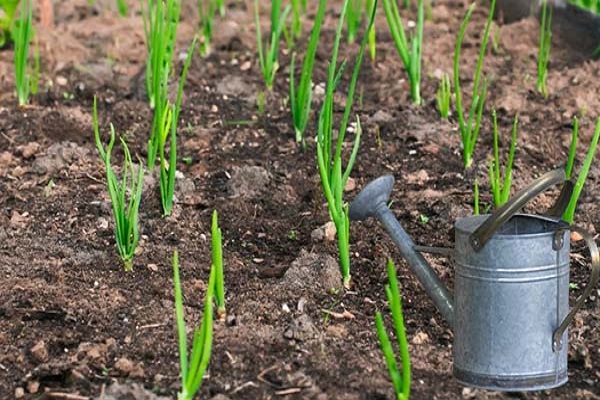
For a vegetable, nutritious and moist soil is one of the main conditions for active growth.
It is necessary to water the onion from the moment it is planted in the garden. Moderate irrigation is an important condition, since the plant is easily susceptible to fungi that multiply in damp and excessive moisture.
In the spring, it is worth waiting for the sun to dry the earth after the winter period: as soon as greens and herbs appear, watering can be carried out.
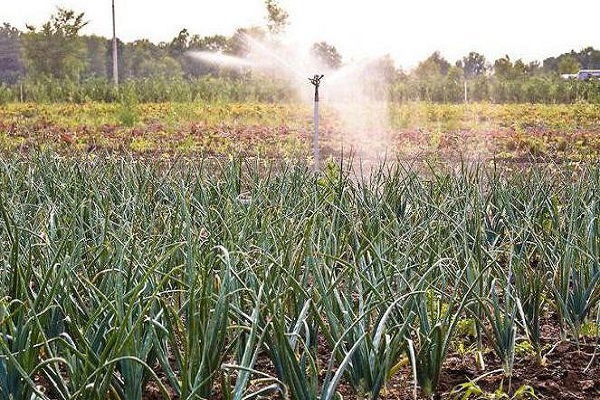
Watering features
Like any vegetable crop, onions require specific care. Irrigation plays an important role in this matter.
Experienced gardeners determine the time and amount of sprinkling based on the condition of the soil. Recommendations on how to properly water the onion:
- The soil should be moderately moist.
- Drying and waterlogging of the earth should be avoided.
- In order to determine how moistened the soil is, you need a thin dry wooden torch. It is stuck into the ground to a depth of at least 10 cm and then they look to see if soil particles remain on it or if it is completely dry.
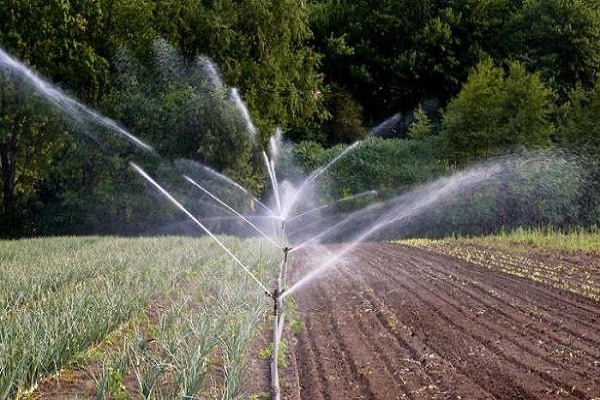
At the beginning of growth
At the first stage of growing, irrigation of a young plant must be timely and special. Its specificity is as follows:
- Water for irrigation at the beginning of growth should be warm and settled. It is not worth heating it on purpose. If the days are sunny and warm, it is enough to collect water in a container and leave it in the sunlight. Possible precipitation will sink to the bottom, and the liquid itself will be heated to the required temperature.
- There are standard norms for how much water to pour into the beds at the initial stage of onion growth. 10 liters of liquid are used per 1 m² of land. The number of irrigations and their volumes depend on the weather and soil conditions.
- Growing onions on a feather has its own characteristics. It is important when watering to ensure that no water remains between the feathers. Otherwise, the greens will start to deteriorate.
- To prevent the green mass from getting burns from the sun's rays, irrigation is carried out in the morning or evening.
- The watering system for each grower is different. If the grooves between the rows are filled with water, it is important to monitor the pressure from the hose and the initial soil moisture. Strong pressure can strip the bulbs and wash out the soil. Root crops will start to disappear.
- The first watering is carried out immediately after planting. During irrigation, liquid fertilizers are applied, which allow the bulb to take root faster and adapt to the soil.
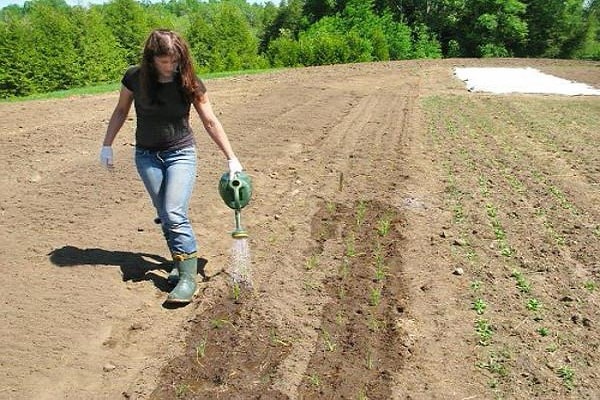
When ripe
Gardeners recommend at the ripening stage, and this is about 2 months after planting, to reduce the amount of watering. If this is not done, then you can spoil the taste of the crop and its ability to be stored for a long time.
The bulb from this period can already be prepared for harvest. If she has gained the required mass and is saturated with useful substances, her feathers will fall on the ground. If the green tops are laid down, you need to cut the irrigation in half.
When feeding, you need to water the soil before and after the introduction of drugs into the soil. This will allow nutrients to penetrate deeper and more evenly into the desired soil layers. Fertilizers are applied every week during watering. The culture reacts well to nitrogen, phosphorus and potassium.
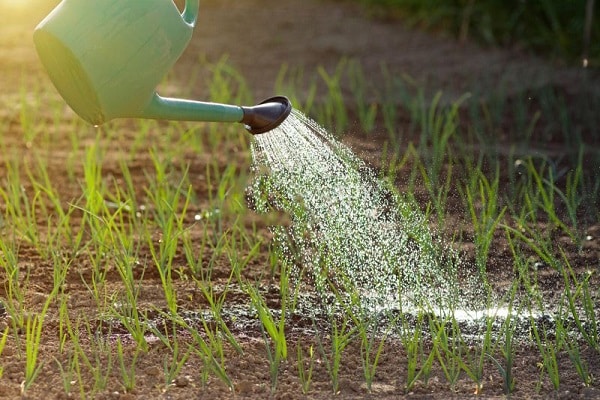
Before harvest
Most gardeners believe that it is necessary to stop irrigating the beds often before harvesting. At least 7-10 days before, the number of waterings is reduced to 1 time per week. You can completely stop watering the onion a couple of days before harvesting it.
If you grow a vegetable for the sake of greenery, it is recommended to focus on the length of the feather. To collect the tops should reach 30-40 cm. Upon reaching the desired parameters of the tops, watering is completely stopped a couple of days before removing the greenery. This is done to keep the feathers clean and dry.

When is watering not required?
Gardeners' recommendations when it is not necessary to water the beds with onions:
- At least one week before harvest. This is a prerequisite. The vegetable must be removed from the soil dry, then it will be stored longer. If the weather is rainy and there is a threat of crop loss, the wet bulbs are dried in a dry and well-ventilated area.
- Opinions differ as to whether to water the onions in August. By this time, irrigation should be reduced, but it is not recommended to stop completely. Lack of moisture in the last stage of onion ripening can affect the taste of the root crop.
- You need to follow the nearest weather forecasts. Bad weather can disrupt plans for harvesting or feeding. It is worth fertilizing plants with mineral preparations several days before the expected rainy period. Thus, the beneficial substances will have time to be absorbed by the root system and their concentration will correspond to the required rate.
- A lot of moisture in the soil is not required for the crop, so watering should be special at all stages of the growing season. When planting, it is important to regularly irrigate the beds so that the bulb wakes up and grows actively. During the ripening period, it requires less moisture, so the amount of watering is reduced. Immediately before harvesting, the soil is completely moistened.
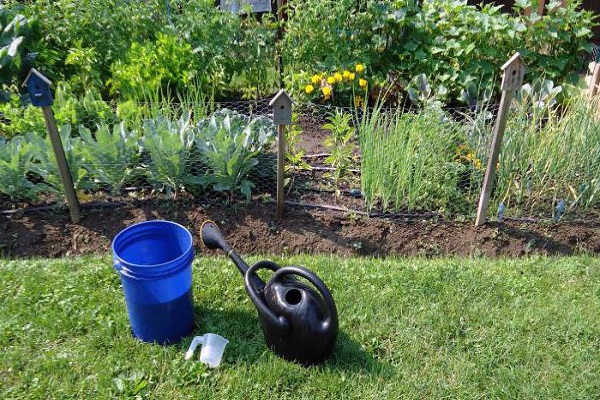
If you adhere to the basic rules of watering, the harvest will be good and of high quality.
How and why to water the onion with salt solution?
It is recommended to water the onions with a saline solution, because such a liquid helps in the fight against the main pest of vegetables - the onion fly. The insect lays the larvae in the ground, and small worms eat the bulb. In addition, the pest destroys the green mass. The plant dries up.
Salt water irrigation has advantages not only in the fight against onion fly, but also in a number of other pests that can damage the crop.
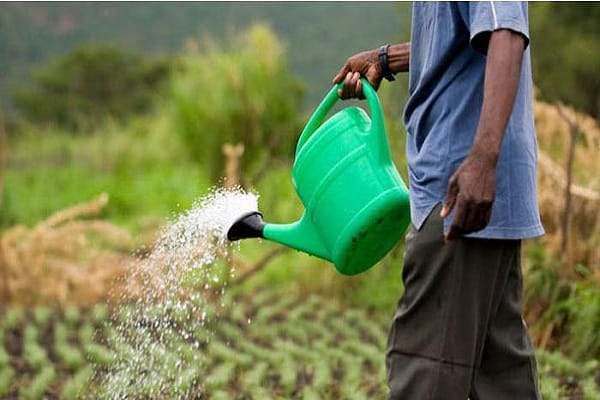
The procedure is carried out in 3 stages:
- The first time you need to water the beds with a solution with an onion feather length of 5-7 cm.
- 10 days after the first irrigation.
- The final watering is carried out 10 days after the second treatment.
For each stage, a salty solution is prepared in different concentrations: for the first, 30 g of salt is taken for 1 liter of water, for the second time - 40 g of salt and the third - 60 g.

If the pest infestation is small, then all 3 irrigations with a solution of 30 g of salt can be carried out. It is important after each moistening with a solution to water the beds from above with settled water.
Grooming and growing onions is not difficult and troublesome. The main thing is to familiarize yourself in advance with the specifics of agricultural technology and adhere to the recommendations of gardeners.
